Cube-Roots
Facts:
- Cubes from 1- 10
|
Number |
Cube |
Cube ends with |
Thus as seen cubes have distinct ending, there is no overlapping. Thus, if the given number is perfect cube, then the last digit will help to find the cube root. |
|
1 |
1 |
1 | |
|
2 |
8 |
8 (Compliment of 2) | |
|
3 |
27 |
7 (Compliment of 3) | |
|
4 |
64 |
4 | |
|
5 |
125 |
5 | |
|
6 |
216 |
6 | |
|
7 |
343 |
3 (Compliment of 7) | |
|
8 |
512 |
2 (Compliment of 8) | |
|
9 |
729 |
9 | |
|
10 |
1000 |
0 |
- Cube roots need be grouped in a group of 3 from R –> L.Thus the number of groups formed will be == Number of digits in the cube root.For example (for perfect cubes).
- 1728 will be grouped as 1,728. Thus its cube root will be of 2 digits84604519 will be grouped as 84,604,519. Thus its cube root will be of 3 digits.300763 will be grouped as 300,763. Thus its cube root will be of 2 digits.
- Always the 1st group will decide the 1st digit of cube root.Find the perfect cube which is <= 1st group and its cube root will be 1st digit of given number’s cube root.
For above examples
| Cube | Perfect cube <= 1st group | Cube root of column 2 | 1st digit of given num’s cube root. (3rd point) | Last digit of given num’s cube root. | Number of digits in given num’s cube root (2nd point) | Required cube root |
| 1,728 | 1 | 1 | 1 | 2 | 2 | 12 |
| 84,604,519 | 64 | 4 | 4 | 9 | 3 | 4_9 |
| 300,763 | 216 | 6 | 6 | 7 | 2 | 67 |
- As seen from above table, when we have 2 groups we can directly write the cube root(2 digits) i.e. Calculating cube root of a number having <=6 digits is very simple and doesn’t require more steps. But if we have more than 2 groups we need to use some other logic.
- 3 digit number(cba) can be written as a+10b+100c. Its cube:(a+10b+100c)3= a3 + 1000b3 + 10,00,000c3 + 30a2b + 300a2c + 300ab2 + 30,000ac2 + 3,00,000bc2 + 30,000b2c + 6000abc.= 10,00,000c3 + 1,00,000 x 3bc2 + 10,000 x (3ac2+ 3b2c) + 1000 x (b3+6abc) + 100 x (3a2c + 3ab2) + 10 x 3a2b + a3.
Places
Ten lakh/
1 million
lakhs
Ten Thousands
Thousands
Hundreds
Tens
Unit
c3
3bc2
3ac2+ 3b2c
b3+6abc
3a2c + 3ab2
3a2b
a3
Argumentation Method (Vedic Math Cube Root for a 3 digit number):
It is a method of eliminating process of reasoning methodical.
- From unit’s place, subtract a3 and this will eliminate last digit.
- From ten’s place, subtract 3a2b and this will eliminate 2nd last digit.
- From hundreds place, subtract (3a2c + 3ab2) and this will eliminate 3nd last digit.
- From Thousands place, subtract (b3+6abc) and this will eliminate 4th last digit and so on.
Examples:
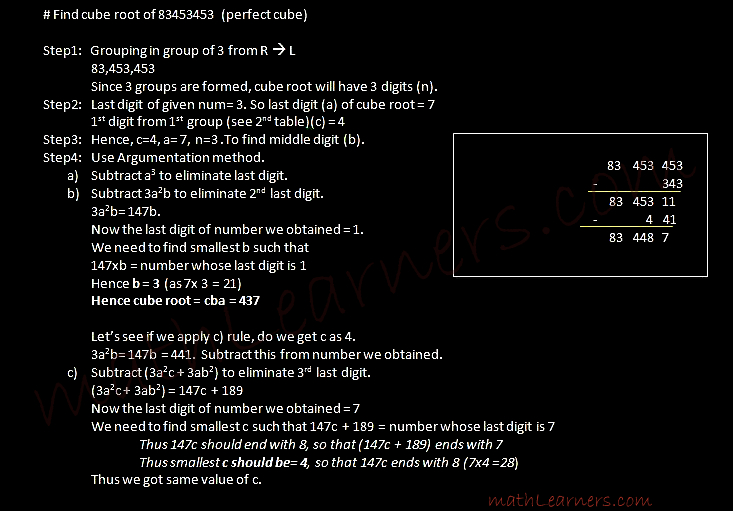
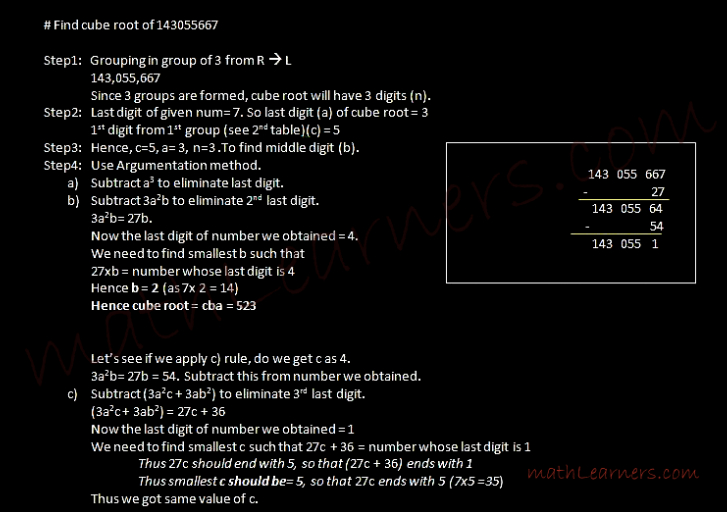
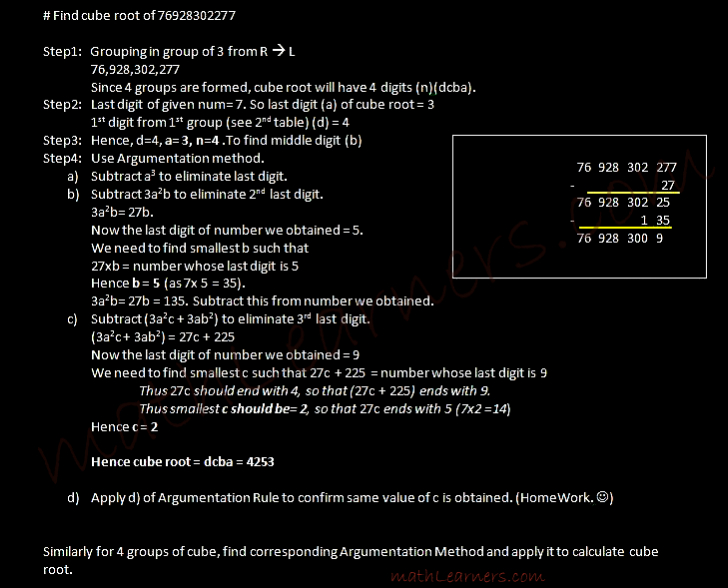
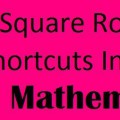
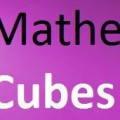
Sir we can’t find cube root of 7-8 digits ending with 5. Like 190109375 and 184706077375.
Its difficult….if anbody can…please help me
SOLVE 6644672
how we identify that the number is a perfect cube by vedic math techniq ?
Unfortunately Dhwani its diffult to know whether number is perfect cube.
But Yes, if you are preparing for some competitive exam, each question has 4 options. So if options doesnot have decimal number So it will be SURE that the given number in question is perfect cube.
Please find cuberoot of 190109375, 184706077375
Its very difficult to find cuberoot of large no. Ending with 5
Cuberoot of 190109375
a=5, c=5, take different vales of b = 1/3/5/7
Last digit must always match…..
So only b=7 fulfill the rules.
Hence ans. Is 575.